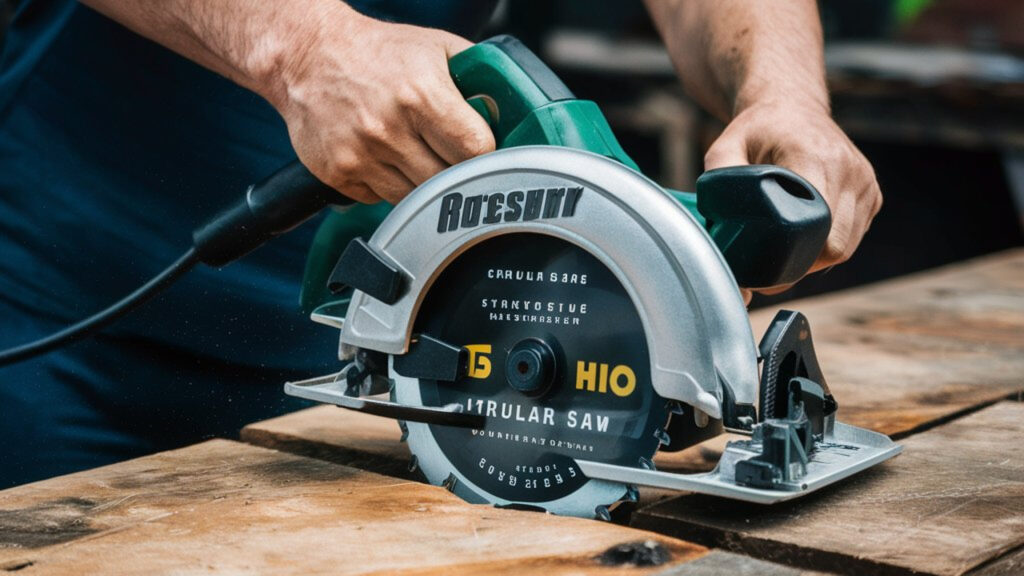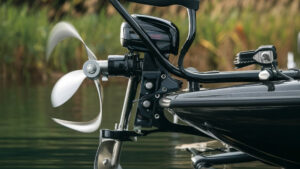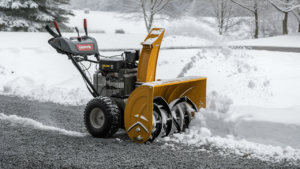When it comes to cutting wood, a corded circular saw is a handy tool that can help you get the job done quickly and accurately. Whether you are a professional woodworker or a DIY enthusiast, having the right corded circular saw can make all the difference in the world. In this buying guide, we will help you choose the best corded circular saw for your needs.
Recommended Best Corded Circular Saw 2024-2025
| Recommendation | Product |
| Best Overall | DEWALT 20V MAX Circular Saw |
| Popular Choice | Makita 5007F 7-1/4″ Circular Saw |
| Best Value | Metabo HPT 7 1/4-Inch Circular Saw |
| Best Budget | SKIL 15 Amp 7-1/4 Inch Circular Saw |
| Another Excellent Pick | BOSCH CS10 7-1/4-Inch 15 Amp Circular Saw |
Motor Power
The first thing to consider when buying a corded circular saw is the motor power. The power of the motor will determine how quickly and accurately the saw cuts through the wood. The motor power is measured in amps, and the higher the amps, the more powerful the motor. A saw with a higher amp motor will be able to cut through thicker and harder wood with ease.
Blade Size
The blade size is another important factor to consider when buying a corded circular saw. The blade size is measured in inches, and the most common blade sizes are 7-1/4 inch and 8-1/4 inch. The larger the blade size, the deeper the cut you can make. A 7-1/4 inch blade is suitable for most general-purpose cutting tasks, while an 8-1/4 inch blade is better suited for cutting through thicker and harder wood.
Blade Type
The type of blade you use can also have an impact on the quality of your cuts. There are different types of blades available, including crosscut blades, rip blades, combination blades, and specialty blades. Crosscut blades are designed for cutting across the grain, while rip blades are designed for cutting with the grain. Combination blades can be used for both types of cuts, while specialty blades are designed for specific cutting tasks, such as cutting metal or masonry.
Cutting Depth
The cutting depth is the maximum depth that the saw can cut through. This is determined by the size of the blade and the depth adjustment mechanism on the saw. If you need to make deeper cuts, you will need a saw with a larger blade and a deeper cutting depth.

Bevel Capacity
The bevel capacity is the angle at which the saw can cut. Most saws have a bevel capacity of 45 degrees, which is suitable for most cutting tasks. However, if you need to make angled cuts, you will need a saw with a larger bevel capacity.
Speed
The speed of the saw is another important factor to consider. The speed is measured in revolutions per minute (RPM), and the higher the RPM, the faster the saw will cut. However, a saw with a high RPM may be more difficult to control, especially if you are a beginner. A saw with a lower RPM may be easier to control, but it may take longer to make cuts.
Ergonomics
The ergonomics of the saw are also important. You want a saw that is comfortable to hold and easy to control. Look for a saw with a comfortable grip and a well-balanced design. The weight of the saw is also important. A heavier saw may be more stable, but it may be more difficult to maneuver.
Price
The price of the saw is also an important consideration. Corded circular saws come in a range of prices, from budget-friendly options to high-end models. Decide on a budget before you start shopping, and look for a saw that offers the features you need at a price you can afford.
Corded Vs Cordless Circular Saws: Cutting-Edge Battle!
When choosing between corded and cordless circular saws, consider your power source and mobility needs. Corded saws provide consistent power, while cordless saws offer greater portability and convenience.
Both types have their advantages and are suitable for different applications. Corded saws are ideal for heavy-duty tasks that require continuous power, while cordless saws are perfect for jobs that require mobility and flexibility. Understanding the differences between corded and cordless circular saws will help you make an informed decision based on your specific project requirements.
Introduction To Circular Saws
When choosing between corded and cordless circular saws, it’s important to consider your specific needs and the tasks you’ll be tackling. Corded saws provide consistent power without the need for recharging, making them ideal for heavy-duty projects. On the other hand, cordless saws offer greater mobility and convenience, making them perfect for DIY enthusiasts and those working in areas without easy access to power outlets.
For DIY projects, cordless circular saws have become increasingly popular due to their portability and ease of use. As more people engage in home improvement and woodworking, the demand for cordless saws has surged. However, for professional carpenters and contractors, corded circular saws remain a staple due to their uninterrupted power supply and ability to handle prolonged use.
The Corded Circular Saw Advantage
Experience the Corded Circular Saw Advantage with its consistent power supply for uninterrupted cutting. Unlike cordless circular saws, corded models provide reliable performance without the need to worry about battery life or charging. Get the job done efficiently and effortlessly with the reliable power of a corded circular saw.
| The Corded Circular Saw Advantage |
| Consistent Power Supply |
| Suitability for Extended Use |
Corded circular saws have the advantage of a consistent power supply, which is essential when working on large projects that require extended use. With a corded circular saw, you don’t have to worry about running out of battery power or recharging the battery, which can save you valuable time and keep your work on schedule. Additionally, corded circular saws are suitable for extended use because they can handle tough jobs without overheating or slowing down. This makes them ideal for professionals who need a reliable tool that can handle heavy-duty workloads. Overall, the corded circular saw advantage is hard to beat when it comes to consistent power supply and suitability for extended use.
The Mobility Of Cordless Circular Saws
| The Mobility of Cordless Circular Saws |
| Freedom from Power Outlets |
| Ease of Handling and Transport |
Cordless circular saws offer a significant advantage over their corded counterparts: mobility. With no need for a power outlet, you can easily move around and work in different areas, whether it’s inside a house or outdoors. This freedom allows for greater flexibility and convenience during your projects.
Additionally, the absence of a cord means cordless circular saws are easier to handle and transport. You don’t have to worry about the cord getting tangled or limiting your movements. This makes it simpler to maneuver the saw around tight corners or challenging angles, providing more precision and control.
Moreover, cordless circular saws are often designed with lightweight materials, making them easier to carry and use for extended periods without causing fatigue. This aspect is particularly beneficial for professionals who need to work on multiple job sites throughout the day.
Performance Face-off
Corded Vs Cordless Circular Saws offer distinct advantages in various applications. When comparing Performance Face-Off, it’s essential to consider the Power and Torque of each type. Corded saws typically deliver consistent power, making them ideal for heavy-duty tasks. On the other hand, cordless saws provide portability and convenience, although they may have slightly less power. When it comes to Battery Life and Recharge Times, cordless saws vary widely based on battery capacity and usage. Some models offer quick recharge times, ensuring minimal downtime. In conclusion, the choice between corded and cordless circular saws depends on the specific needs of the user and the nature of the projects.
Ergonomics And User Comfort
When choosing between a corded and cordless circular saw, ergonomics and user comfort are important factors to consider. The weight and balance of the tool play a crucial role in ensuring a comfortable and efficient cutting experience. A lightweight saw with a well-balanced design allows for better control and reduces fatigue during prolonged use. It enables users to maneuver the saw easily, making it ideal for overhead cuts or working in tight spaces.
In terms of vibration and noise levels, cordless circular saws have made significant advancements. With the use of advanced motor technology and anti-vibration systems, these saws now offer reduced vibration and noise compared to their corded counterparts. This not only improves user comfort but also minimizes the risk of developing hand-arm vibration syndrome (HAVS) after prolonged use.
Precision And Accuracy
Corded vs Cordless Circular Saws: The choice between corded and cordless circular saws depends on the user’s specific needs. Precision and Accuracy: Corded circular saws generally offer more power and consistent performance, resulting in higher precision and accuracy. Cutting Depth and Adjustability: Cordless circular saws may have limitations in cutting depth and adjustability due to their battery-powered nature. Laser Guides and Visibility: Corded models often come with laser guides and enhanced visibility features, aiding in precise cuts and improved accuracy.
Safety Features
When it comes to safety features, both corded and cordless circular saws offer essential protections. Corded saws typically have a brake system that stops the blade quickly, while cordless saws may feature electronic blade brakes for added safety. Additionally, cordless models often include blade guards to protect users from potential accidents.
| Safety Features |
| • Cordless saws have less safety features than corded saws. |
| • Brake systems in cordless saws may not be as quick. |
| • Blade guards are essential for both corded and cordless saws. |
| Handling Precautions |
| • Always wear protective gear when using any type of saw. |
| • Secure workpieces properly to prevent accidents. |
Cost Implications
Corded circular saws have lower initial investment but higher maintenance and operational costs. Cordless saws are pricier upfront but cheaper to maintain in the long run. The corded saws require constant power supply which could lead to higher electricity bills. Cordless saws, on the other hand, have rechargeable batteries that can reduce operational costs over time. Consider your budget and usage frequency to make the right choice.
Environmental And Practical Considerations
Emission and Noise Pollution: Corded circular saws emit less pollution compared to cordless saws. Cordless saws produce more noise during operation.
Accessibility and Power Availability: Corded saws require constant power source, limiting mobility. Cordless saws offer greater flexibility in various work environments.
Making The Right Choice For Your Needs
|
Assessing Project Requirements: Consider the project scope and materials. Personal Preferences and Recommendations: Think about comfort and maneuverability. |
Frequently Asked Questions
What Is The Most Common Corded Circular Saw Size?
The most common corded circular saw size is 7-1/4 inches, ideal for various cutting tasks.
What Is The Best Circular Saw For A Beginner?
The best circular saw for a beginner is the DeWalt cordless circular saw. It offers powerful, smooth cutting and outstanding accuracy.
What Should I Look For When Buying A Cordless Circular Saw?
When buying a cordless circular saw, look for high free-load speed for better control and power. Consider the RPM as an indicator of raw sawing power. Also, check for features, functions, and blade options suitable for your project needs.
Can A 5.5 Inch Circular Saw Cut A 2×4?
Yes, a 5. 5 inch circular saw can cut a 2×4, but it may require multiple passes.
Conclusion
When it comes to buying a corded circular saw, there are many factors to consider. The motor power, blade size, blade type, cutting depth, bevel capacity, speed, ergonomics, and price are all important considerations. By taking the time to choose the right saw for your needs, you can make sure that you get the job done quickly and accurately.








